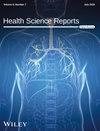Machine Learning Algorithms for Adverse Drug Reactions Prediction and Identifying Its Determinants Among HIV Patients on Antiretroviral Therapy in the University of Gondar Comprehensive and Specialized Hospital, in Amhara Region, Ethiopia
Abstract
Background
Harmful and unexpected reactions to drugs given at standard dosages using the appropriate administration technique for the goals of therapy, diagnosis, or prevention are known as adverse drug reactions (ADRs). Every medicine has the potential to produce both favorable and unfavorable outcomes. Information regarding the timing of adverse drug reactions and their predictors in adults is not well addressed regarding time and various predictor variables, including the study area, even though three separate studies on the adverse drug reactions of adult patients receiving antiretroviral therapy (ART) have been conducted in Ethiopia.
Objective
To predict adverse drug reactions in HIV patients receiving antiretroviral medication in the University of Gondar Comprehensive and Specialized Hospital using machine learning algorithms.
Methods
Using institution-based secondary data, patients receiving antiretroviral medication at the University of Gondar Comprehensive and Specialized Hospital between January 11, 2018, and January 10, 2023, were examined. Patient data was extracted from the electronic database using a methodical checklist, and it was then imported into Python version three for pre-processing and analysis. Then, seven machine learning algorithms for supervised classification were trained to create models. The prediction models were evaluated using F1-score, AUC, accuracy, sensitivity, specificity, and precision. Association rule mining was used to determine the best rule for the association between independent features and the target feature.
Result
There were 3371 (64.04%) female participants and 1893 (35.06%) male individuals out of 5864 research participants. Among all the chosen classifiers, the random forest classifier (sensitivity = 1.00, precision = 0.987, f1-score = 0.993, AUC = 0.9989) fared better in predicting ADRs. Based on the importance ranking, the CD4 count was determined to be the most significant predictor feature. The top eight predictors of ADRs were identified by random forest feature importance and association rules as follows: Male, younger age, longer duration on ART, not taking Co-trimoxazole preventive therapy (CPT), not taking TB (Tuberculosis) preventive therapy (TPT), secondary educational status, TDF-3TC-EFV, and low CD4 counts.
Conclusion
Our research shows that HIV patients who are at a high risk of adverse drug reactions and those who can recognize the predictive traits associated with the ADRs can be categorized according to how effectively their ART treatment is working. However, our research may help address the pressing public health issue of diagnosing and treating HIV-positive individuals.


 求助内容:
求助内容: 应助结果提醒方式:
应助结果提醒方式:


